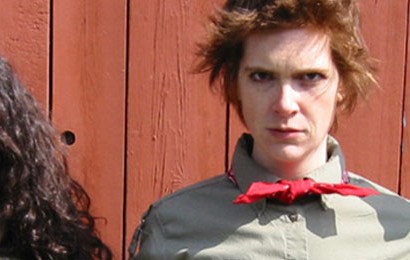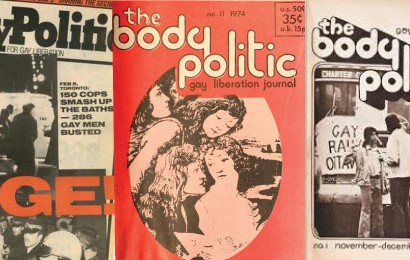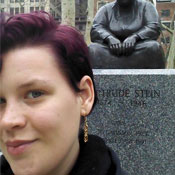Born in Pennsylvania in 1874, Gertrude Stein grew to be a literary innovator of the Modernist movement, best known for a writing style that broke the conventions of linear narrative, and for an extensive art collection.
The youngest of 5 children, Stein attended Radcliffe College when it was an annex of Harvard University, where she worked under psychologist William James, conducting several experiments where they tried to illicit automatic or stream of consciousness writing from their test subjects. This early exposure to the ideas of stream of consciousness can be seen in the use of repetition in her later work.
Stein then had a brief stint at John Hopkins medical school but was presumably bored by it and left to follow her brother Leo to Paris. It was in Paris, with Leo pursuing a career as a visual artist, that Stein was really able to delve deeply into the art world, hosting regular salons that were regularly attended by such Modernist names as Pablo Picasso, Ernest Hemingway F. Scott Fitzgerald, Sinclair Lewis, Ezra Pound, Thornton Wilder, and Henri Matisse.
She wrote her first book, Three Lives, in 1909 and followed it with Tender Buttons in 1914, a collection of poems that shows the profound effect modernist and cubist painting had on Stein’s own artistic sensibility, playing as it does with surprising combinations and collisions of images, words, and sounds. Stein went on to write over 50 works of poetry, prose and plays, the most famous (or at least the most influential) of these works being The Making of Americans (1925), How To Write (1931), The Autobiography of Alice B. Toklas (1933) and Stanzas in Meditation and Other Poems (written from 1929-1933 and published in 1956).
Reading Gertrude Stein can be a bit of an exercise in frustration. Productive, rewarding frustration at times, yes, but frustration nonetheless. Sitting in the sun in the first days of Spring and reading Tender Buttons you might even, hypothetically, end up muttering the words over and over aloud, unsure of whether you’re trying to parse meaning out of the repeating words or, contrarily, to get beyond the words as signifiers and appreciate them for their resonances, the way they feel in your mouth. Either way, the result is the same: the neighbours that can hear you repeating
Rhubarb is susan not susan not seat in bunch toys not wild and laughable not in little places not in neglect and vegetable not in fold coal age not please.
And may question your sanity. Hypothetically.
Frustrating though Stein’s work may be, she is a genius. She tells us so herself in the her first work to garner mainstream appeal “The Autobiography of Alice B. Toklas” where Stein, writing as her partner Alice, says:
“I may say that only three times in my life have I met a genius and each time a bell within me rang and I was not mistaken, and I may say in each case tit was before there was any general recognition of the quality of genius in them. The three geniuses of whom I wish to speak are Gertrude Stein, Pablo Picasso and Alfred Whitehead.”
And so, Stein calls herself a genius, through Toklas in a memoir that both is and isn’t about Stein herself, as it both details Stein’s work and life while ruminating on the necessary but often invisible work of the wives of geniuses a rumination that somehow simultaneously foregrounds and erases Toklas’ experience. Despite the contradictions, it is Stein’s most accessible work. Whether it is more accessible because it was, according to Stein, written in 6 weeks for the express purpose of making a quick buck, or because it was meant to sound more like Toklas than Stein, some of Stein’s contradictory nature comes through in the very form of the book, the then emerging form of fictional autobiography.
The contradictions, along with the trademark repetition, is after all, what makes a work recognizably Stein. She herself was a woman of contradictions and shifting interests. A profoundly prolific writer, who crossed disciplines from memoir to poetry to operetta, she remains more read about than read and, famous and influential though she is, the thing most often read about her is, ironically, that she is unreadable.
Related posts

Feminist Theatre in Canada: a History



